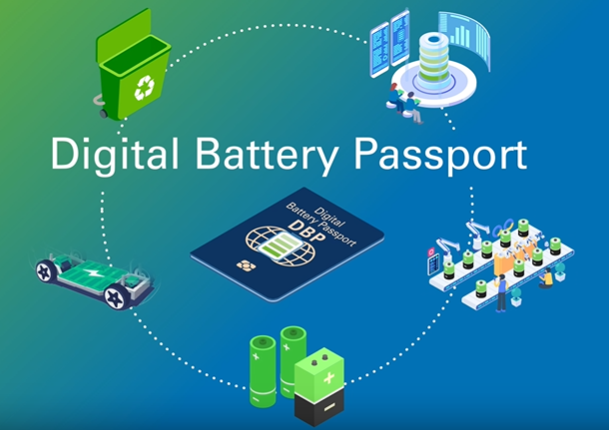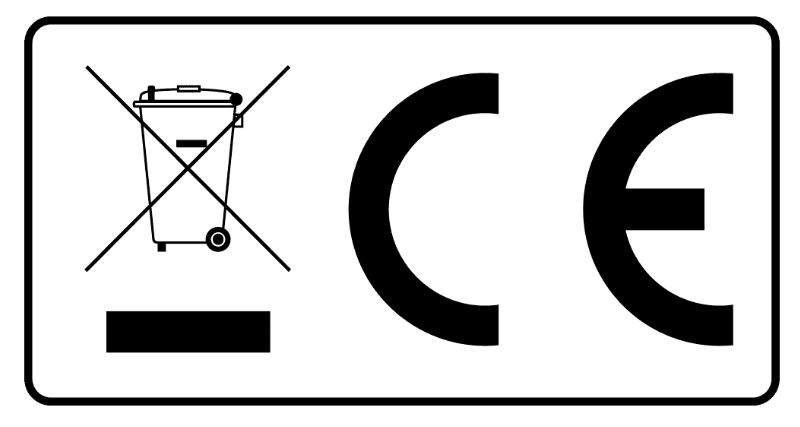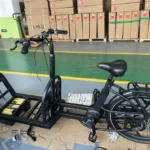EU 2023/1542: How New Battery Rules Will Reshape E-Cargo Bike Businesses—And How to Prepare
For e-cargo bike industry players targeting the EU market, a critical shift is underway. The EU’s new Batteries Regulation (EU 2023/1542) isn’t just another set of rules—it’s a game-changer that will impact everything from your supply chain to your customer relationships. With deadlines fast approaching (Directive 2006/66/EC will be fully repealed on 18 August 2025, and from that point on the regulation will become the sole reference.), getting ahead now isn’t just smart—it’s essential to keeping your cargo ebike for business competitive. Here’s what you need to know.
What the Regulation Means for Your Bottom Line
This new rule tightens requirements across the entire battery lifecycle, with specific focus on e-cargo bike batteries (classified as Light Means of Transport, or LMT, batteries). For your business, this translates to three big implications:
- Market Access Risks: Non-compliant batteries won’t be allowed in the EU. Miss a deadline, and you could face delayed shipments, fines, or even blocked inventory—costing you sales and customer trust.
- Cost Pressures: Upgrades to labeling, supply chain tracking, and digital systems will require investment. But done right, these can be offset by avoiding penalties and winning premium customers.
- Competitive Opportunities: Early adopters will stand out. Eurobike 2025 data shows EU buyers—especially “Sustainable Parents” and commercial “Cargo Transporters”—are willing to pay more for compliant, eco-friendly e-cargo bikes.
Key Deadlines: Mark These Dates to Avoid Disruption
August 18, 2024
All batteries must carry a permanent CE mark (at least 5mm tall) and meet strict chemical limits (mercury ≤0.0005%, cadmium ≤0.002%, lead in portable batteries ≤0.01%). If your current suppliers can’t meet these, you’ll need new partners—fast.
August 18, 2025
LMT batteries (like those in e-cargo bikes) must display a crossed-out bin symbol (3% of the label area) for waste collection and a QR code linking to the upcoming “Battery Passport.” You’ll also need to register with EU national authorities and start reporting battery volumes—adding admin work unless your suppliers handle it.
February 18, 2026
Labels must include technical details: capacity (Wh), expected lifespan (cycles/years), chemistry, and disposal instructions. Plus, carbon footprint calculations for batteries will start (required for the passport by 2028 for LMT).
February 18, 2027
The full digital Battery Passport goes live. Every e-cargo battery sold in the EU must have one, accessible via QR code, with data on safety, recycled content, and supply chain origins. No passport = no sale.

How This Will Disrupt Your Business (And How to Fight Back)
Supply Chain: Traceability and Compliance
The regulation demands detailed tracking of raw materials (cobalt, lithium, nickel) and 12% recycled content by 2030. For you, this means:
- Risk: If your current battery suppliers can’t prove responsible sourcing or recycled content, you’ll need to switch—potentially disrupting production.
- Fix: Audit suppliers now. Ask for documentation on material origins and recycled content. Partner with suppliers who already meet EN 50604-1 (the EU’s mandatory battery safety standard) to avoid rework later.
Labelling and Documentation: Avoid Costly Mistakes
From 2024 to 2027, labeling requirements get stricter by the year. Miss a detail (like a 5mm CE mark or a 3% waste symbol), and your shipment could be held.

- Risk: Retrofitting labels on existing inventory is expensive. Manual data entry for passports could lead to errors.
- Fix: Work with suppliers to integrate labels into production lines. Invest in tools to auto-generate QR codes and passport data—this reduces errors and saves time.
Digital Systems: The Battery Passport Challenge
By 2027, every battery needs a digital passport with real-time data (safety records, carbon footprint, lifecycle stats). For businesses without robust IT, this is a bottleneck.
- Risk: Manual updates or incompatible systems could lead to delayed passport approvals, blocking sales.
- Fix: Choose suppliers with built-in digital platforms that sync with EU systems. This lets you automate data uploads and focus on selling, not paperwork.
Customer Demand: Turn Compliance Into Sales
Eurobike 2025 confirms what buyers want: safety, sustainability, and transparency. Compliant e-cargo bikes check all three boxes.
- Opportunity: Use the Battery Passport as a selling point. Highlight QR codes that let customers scan to see carbon footprints or recycled content—building trust.
- Action: Train your sales team to emphasize compliance as a quality marker. Pair this with features buyers crave (modular designs, longer range via dual batteries) to justify premium pricing.
You maybe interested in:Next-Gen E Cargo Bikes Debut at Eurobike 2025
Steps to Get Ahead Now
Audit Your Current Supply Chain
- Check if your battery suppliers meet 2024’s CE and chemical limits.
- Ask if they’re ready to provide 2025’s QR codes and 2027’s passport data.
- If not, start vetting new partners—speed matters.

Invest in Digital Readiness
- Ensure your systems can handle passport data (or partner with suppliers who do).
- Train your team to use these tools—avoid last-minute delays.
Leverage Compliance in Marketing
- Highlight early compliance in your B2B outreach (e.g., “Our e-cargo bikes are 2027 passport-ready”).
- Share Eurobike 2025 insights with customers: “70% of EU buyers prioritize compliant batteries—we’ve got you covered.”
Why Preparation Pays Off
The EU’s new rules are non-negotiable, but they’re also a chance to strengthen your business. Those who act now will avoid disruptions, win eco-conscious customers, and build long-term trust.

For businesses seeking a reliable partner in this transition, Mobilidade Unida offers e-cargo solutions designed to meet your needs. With a focus on compliance, sustainability, and seamless integration, we’re here to help you turn regulation into results.
Stay ahead of the curve—your EU market position depends on it.






